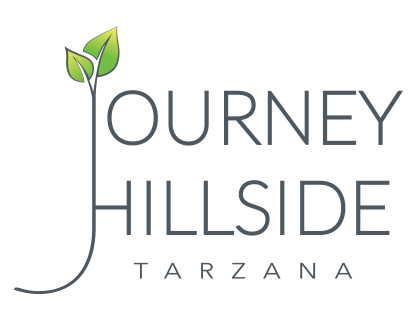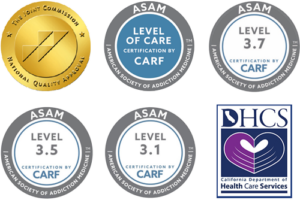Substance Abuse All shapes and sizes
Substance Abuse disorders come in all shapes and sizes, affecting individuals from all walks of life. Each drug produces different effects on those who use it, but the end result is always the same when addiction takes hold — chaos, instability and decreased quality of life.
At Journey Hillside Tarzana, we are committed to helping individuals and their families struggling with addiction regain their sense of balance in life and rediscover what it means to be happy and healthy, without drugs or alcohol. With a variety of evidence-based therapies, specialized services, individualized treatment plans and holistic approaches, we can help or someone you care about overcome addiction and find their path to long-lasting sobriety.
ALCOHOL
Although alcohol is legal and widely available, it can be just as dangerous and addictive as illicit substances such as heroin or cocaine. In fact, alcohol use contributes to more than 2 million deaths every year and alcohol addiction affects more than 15 million people in the U.S. alone. Unfortunately, alcohol use is so popular and socially acceptable that it is often difficult to distinguish moderate drinking from more problematic drinking habits.
Much like other drugs, alcohol has numerous detrimental effects on the brain and body. Long-term use can lead to serious health problems such as liver failure, pancreatitis, ulcers, cardiovascular disease, cognitive difficulties and more. Alcohol also causes dangerous withdrawal symptoms that can lead to seizures, hallucinations and tremors, which can become life-threatening if not treated properly. Read More About Alcohol Addiction.
METHAMPHETAMINES
Methamphetamine is a potent stimulant drug notorious for its detrimental effects on an individual’s health, appearance and well-being. Over the past few decades, meth use has been rising in the United States, particularly in rural areas. Its use has ravaged these communities and become an epidemic as crime and mortality rates skyrocket. Most methamphetamine is produced in clandestine laboratories, as it is fairly easy to manufacture using easily attainable chemicals and supplies. These meth labs are highly dangerous, however, known for their noxious fumes and unexpected explosions.
Methamphetamine occurs as a crystallized powder often referred to as ice, crystal or glass. It is most commonly smoked, but can also be snorted, injected or eaten. When consumed, meth produces a long-lasting surge of euphoria and increased energy levels that will keep a user high for days. It also causes a decreased appetite, dehydration, insomnia, intense paranoia and unpredictable behavior. The long periods of sleep deprivation and excitability also have harmful effects on the brain and may induce hallucinations and psychosis. Read More About Meth Addiction.
PRESCRIPTION DRUGS
Prescription drugs have the potential to be just as addictive, dangerous and habit-forming as illicit substances such as heroin, methamphetamine and cocaine. People often abuse these drugs because they are widely available and assumed to be safer because they were prescribed by a doctor. Unfortunately, this isn’t the case — prescription drugs are so effective at what they do because they are so powerful. Many prescribed medications such as benzodiazepines and opioids are especially dangerous when combined with other drugs, leading to overdoses and other complications.
Commonly abused prescription drugs include:
OPIOIDS
Highly addictive pain-relieving substances that bind to opioid receptors in the brain and cause feelings of warmth, euphoria and relaxation. Known for causing uncomfortable withdrawal symptoms and deadly overdoses. Read More About Opiate Addiction.
- OXYCONTIN/OXYCODONE
- FENTANYL
- VICODIN/HYDROMORPHONE
- CODEINE
- MORPHINE
BENZODIAZEPINES
A class of anti-anxiety medications that produce a calming, sedative effect. Extremely dangerous when mixed with opioids, alcohol and other substances that slow breathing. Known for dangerous withdrawal effects that include seizures and psychosis. Read More About Benzo Addiction.
- XANAX/ALPRAZOLAM
- VALIUM/DIAZEPAM
- ATIVAN/LORAZEPAM
- KLONOPIN/CLONAZEPAM
STIMULANTS
Used to treat ADD/ADHD, stimulants are commonly abused to produce euphoric, energetic effects. High potential for abuse, especially among students. Read More about Stimulant Addiction.
- ADDERALL/AMPHETAMINE
- RITALIN/METHYLPHENIDATE
- DEXEDRINE/DEXTROAMPHETAMINE
- DESOXYN/METHAMPHETAMINE
Other prescription medications, such as sleep aids and sedatives, are also commonly abused. If you find a suspicious pill, there are various resources available online to help you identify it and determine if your loved one is abusing an addictive medication.
HEROIN
Heroin is a semi-synthetic opiate made from morphine, notorious for its addictive potential, high risk of overdose and painful withdrawal symptoms. Heroin use is rising in the United States as the rate at which opioids are being prescribed skyrockets, providing users with a cheaper and more accessible alternative to the more expensive prescription medications.
Heroin also acts on the opioid receptors in the brain, producing a profound euphoria, deep feelings of happiness and relaxation and sedation. Heroin can be smoked, insufflated or injected, increasing its addictive potential as the substance reaches the brain faster for more pronounced effects. With regular use, the brain adjusts to the presence of heroin and can no longer function well without it, leading to uncomfortable withdrawal symptoms if use is suddenly stopped. This reinforces addictive behavior and is, in part, why heroin addiction is so difficult to overcome without proper treatment. Read More About Heroin Addiction.
OPIOIDS
Opioids describe both synthetic and semi-synthetic pain-relieving substances and include prescription medications such as fentanyl, oxycodone and Vicodin. Opioids work in the same way as heroin and naturally-derived opiates such as morphine. By binding to opioid receptors in the brain, they create similar feelings of warmth and euphoria. They also lead to the same withdrawal effects, which include flu-like symptoms such as anxiety, restlessness, muscle aches and diarrhea.
Although these drugs are effective pain relievers, they are often abused, leading to addiction and dependency, which can develop quickly. In the United States, the rates at which opioid addiction and overdoses are rising has created an epidemic. According to the Centers for Disease Control (CDC) and the U.S. Department of Health, prescription opioids were involved in more than 65 percent of all overdose deaths in 2017. Read More About Opioid Addiction.
DXM/COUGH SYRUP
Dextromethorphan, also known as DXM, is a common ingredient found in over-the-counter cough syrups and medicines. When consumed at the low doses recommended in Robitussin and Delsym products, DXM is an effective cough suppressant. When taken in large, recreational doses, however, DXM produces disassociative, hallucinogenic and stimulant effects similar to ketamine and PCP. The abuse potential of the drug is so high that companies pulled their DXM-containing cough syrups from the market before reformulating them to taste bitter.
When used as directed, DXM produces few side effects and is generally considered safe. At the large doses users take to get high, unpleasant side effects occur and the potential for liver damage and respiratory issues rises.
ECSTASY / MOLLY / MDMA
MDMA, also known as ecstasy and Molly, is a popular club drug known for its euphoric, stimulant effects. Commonly used at parties, raves, music festivals, clubs or bars and other social gatherings, MDMA produces a profound euphoria, deep feelings of empathy and happiness, increased amounts of energy and moderate hallucinogenic effects. Users often report feelings connected to each other in a significant way.
In addition to these pleasurable effects, MDMA also produces dangerous and uncomfortable side effects which include overheating, dehydration, teeth grinding, anxiety, insomnia and dilated pupils. Users are also more vulnerable to reckless or dangerous situations as their inhibitions are lowered.
With repeated use, MDMA can cause neurochemical imbalances that lead to depression, anxiety, restlessness, fatigue and cognitive difficulties due to its adverse effects on serotonin. Users may experience these effects when use is suddenly stopped, creating unpleasant withdrawal symptoms that often require professional detox and treatment. Learn More About MDMA aka Molly Addiction.
COCAINE / CRACK
Cocaine is a well-known stimulant drug that can be smoked, insufflated or injected. When taken in any form, the onset of effects is rapid, creating a powerful but short-lived high that produces intense cravings and a compulsion to re-dose. Cocaine commonly occurs a white powder, while crack occurs as yellowish/whitish clumps of cocaine that have been combined with baking soda to convert it into a readily smokable form.
Both cocaine and crack produce intense highs and extreme lows, with many individuals taking large amounts during a binge to avoid coming down. As a result, tolerance and addiction can quickly develop. Frequent use of cocaine has many negative effects on the brain and body and may cause anxiety, heart problems, nosebleeds and nasal infections, respiratory issues, high blood pressure, unpredictable behavior, depression and more. Learn More About Cocaine Addiction.
CONTACT JOURNEY HILLSIDE TARZANA
At Journey Hillside Tarzana, our experienced and compassionate team is adept at treating all forms of substance use disorders and their symptoms. We provide patients with the care, guidance and support they need to dig deep into their addictions and achieve sustainable, long-lasting recovery.
If you or someone you care about is struggling with a substance use disorder, don’t hesitate to contact or call us today at 877-414-1024 and learn more about programs and how they can help.









